Weather variables forsnow production. 15 July 2025
Artificial snow production optimization
Energy and water use efficiency
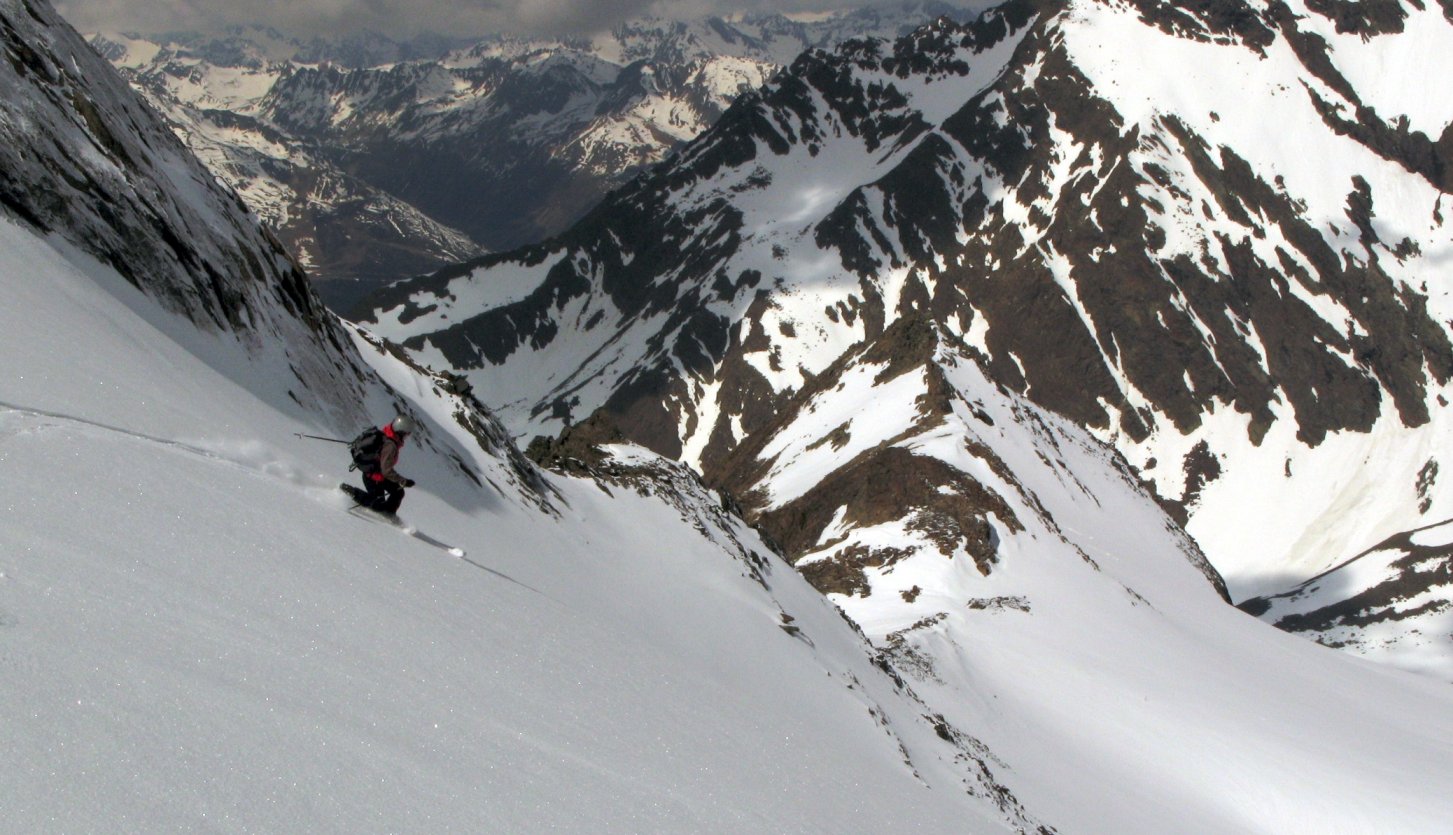
Artificial snow production is a very important part of the operating cost for most ski resorts. Therefore, any optimization in the snowmaking process can result in considerable financial savings.
Advantages of considering weather variables when planning snow production
- Saving water
- Electricity saving
- Improved snow quality
- Enhanced skier experience
The higher the temperature, the higher the density of the snow produced, and therefore the higher the consumption of water to reach a minimum depth on the ski slopes. Effective management of snow production results in considerable energy savings and better management of water resources. The required energy and cost as a function of temperature can be seen in Figures 1 and 2, from a study at Aspen ski resort, Colorado.
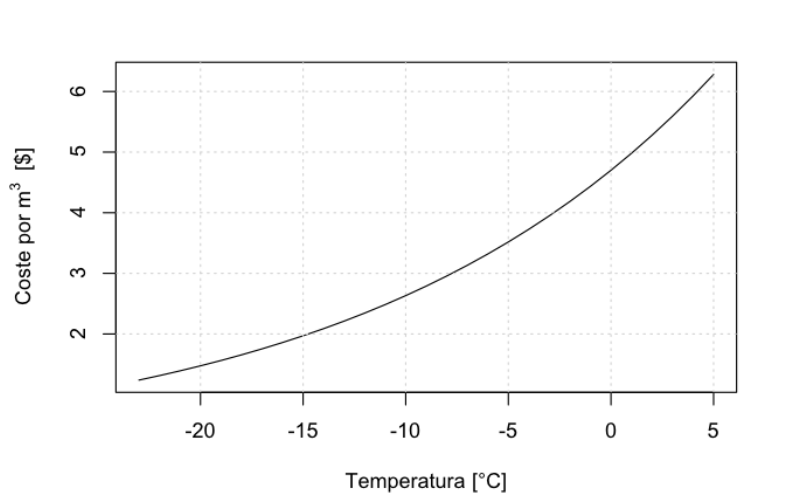
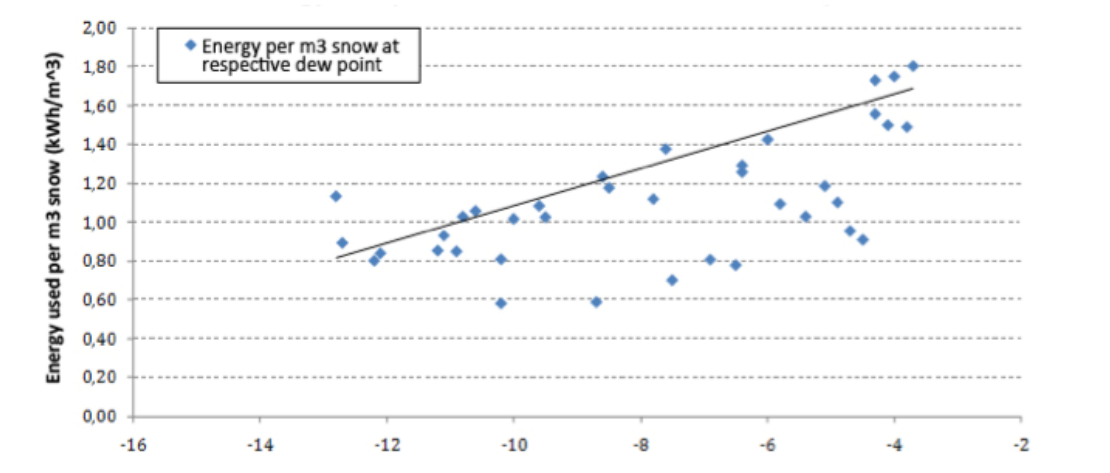
In a study of several ski resorts in the Austrian Alps, Olefs et al. (2010) have shown the relationship between potential snow production (in m³/h) and wet-bulb temperature, as shown in Figure 3. In this study, a Tw value of -2°C is considered to be the upper temperature limit for acceptable results.
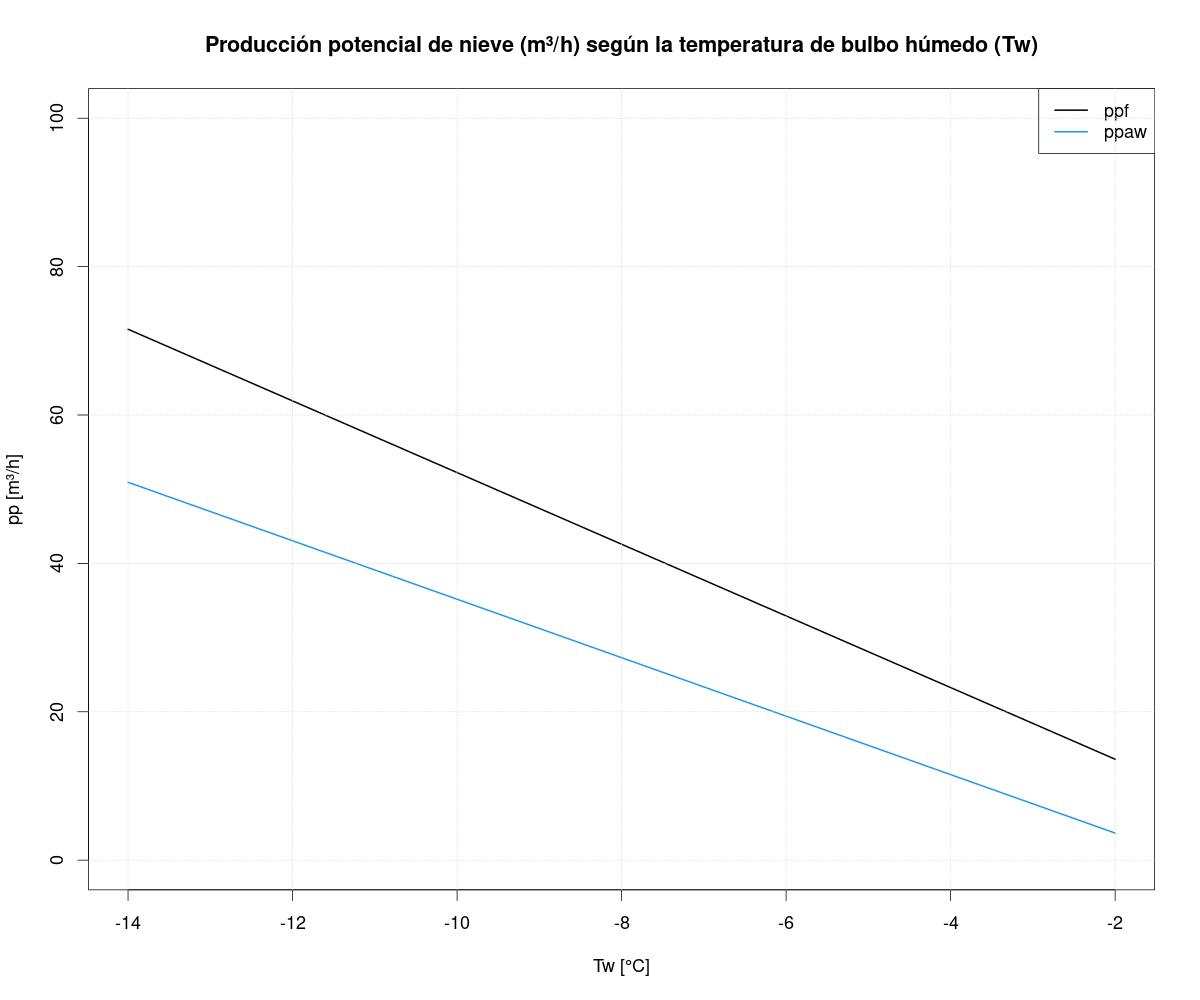
It is possible to optimize snow production according to weather variables, choosing the ideal window to minimize water and energy consumption and maximize snow production and quality. This results in considerable savings, while minimizing environmental impact and enhancing the skier experience.
Snow production optimization tools
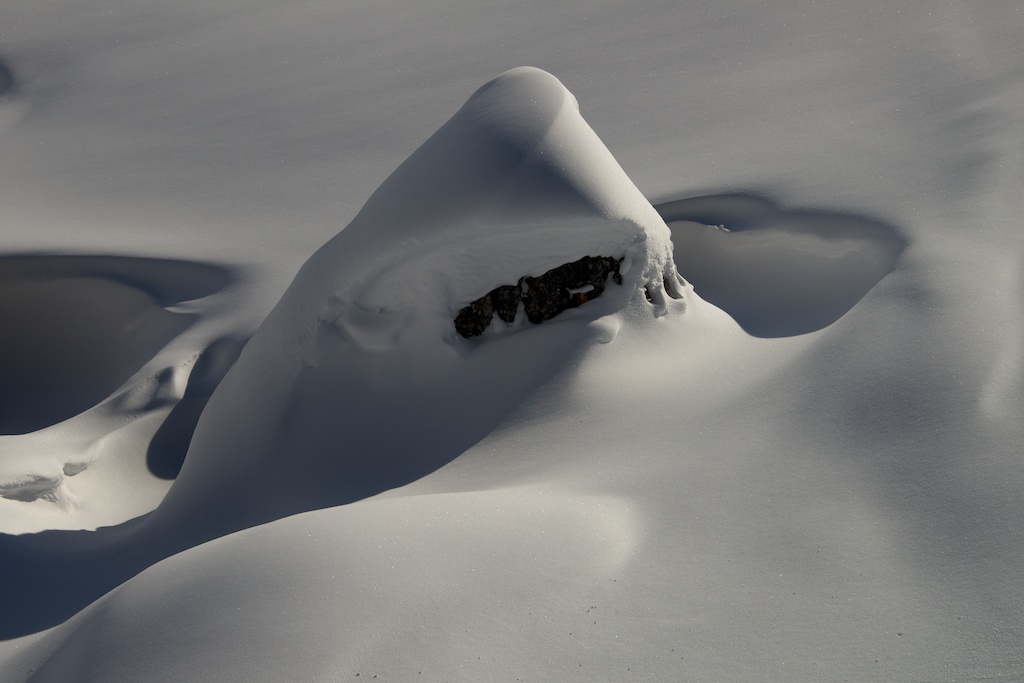
At meteoexploration we have been monitoring snow and glaciers in the Andes, the Alps and Spanish mountain ranges for many years. We have developed specific techniques such as solar radiation models, tools to measure albedo (reflectance) from oblique photographs or specific energy balance models for a precise estimation of snow melting and evaporation or sublimation. We routinely run one of the most sophisticated and up to date weather models, the WRF-ARW. We implemented this model at high resolution, to asses the impact of topography, which is extremely important in high mountain terrain.
From the numerical weather model and variables measured in the field, we can predict the optimal periods for the production of artificial snow, normally when the wet bulb temperature (Tw) is below -6°C. The upper limit when production is not recommended is with Tw higher than ‑2.5°C. Using a high resolution digital elevation model (5 m or less) we can simulate the impact of solar radiation, ambient temperature, wind, long wave radiation from the atmosphere, etc, and accurately estimate melting and sublimation of the snow. . This allows identifying areas where the snow is likely to disappear sooner and need more slope preparation. An example can be seen in Figure 4, showing relative ablation of snow on the slopes.
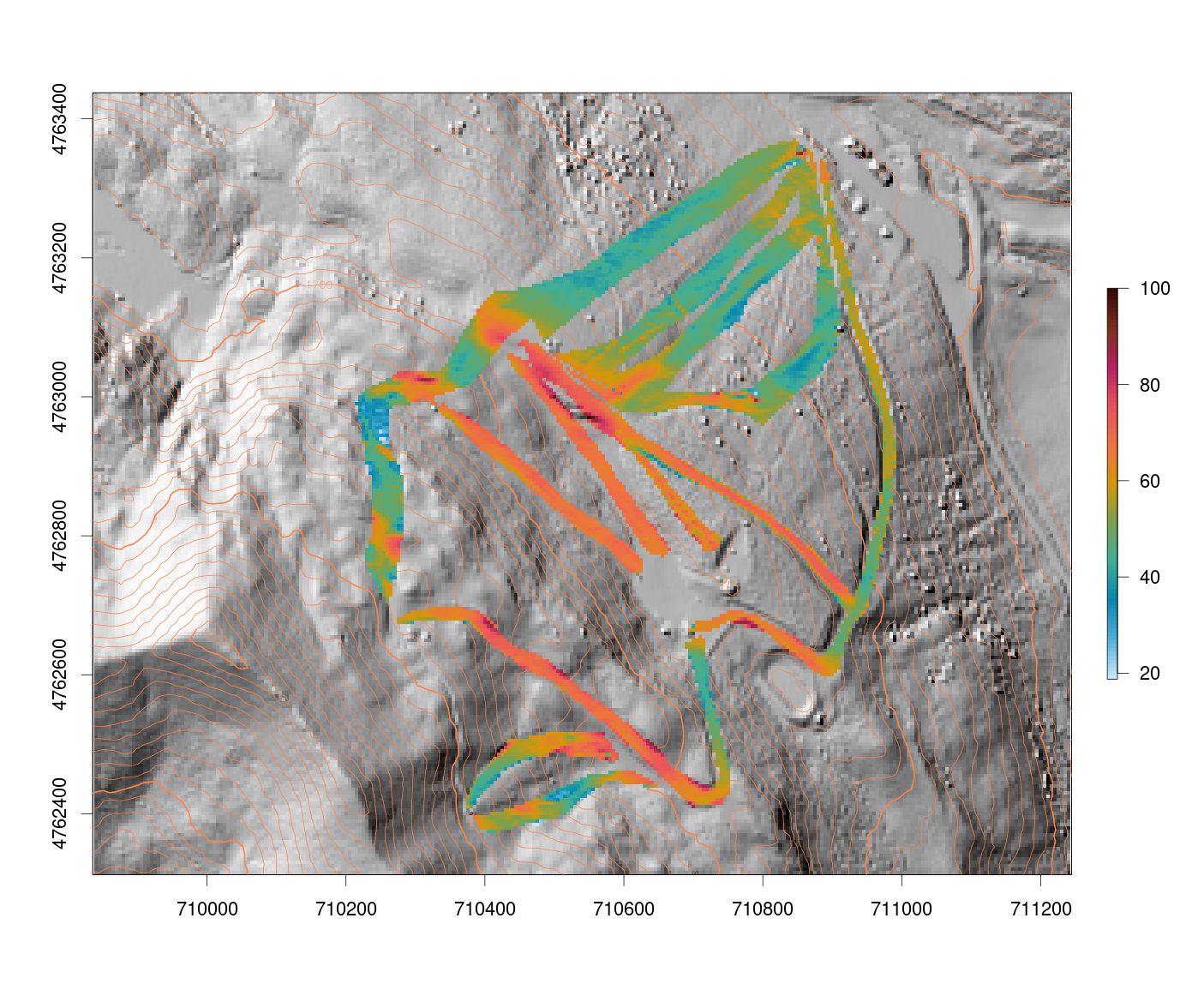
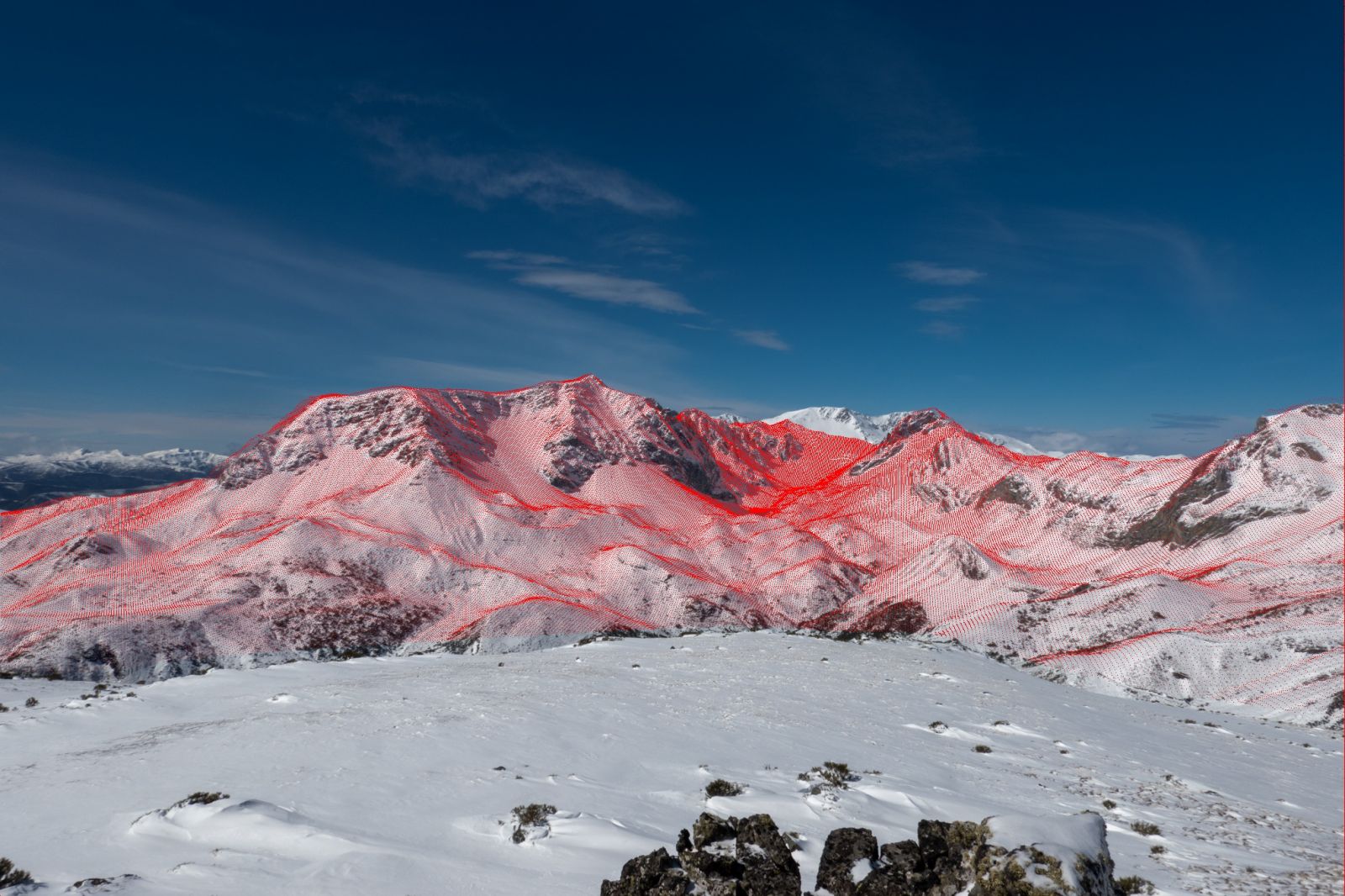
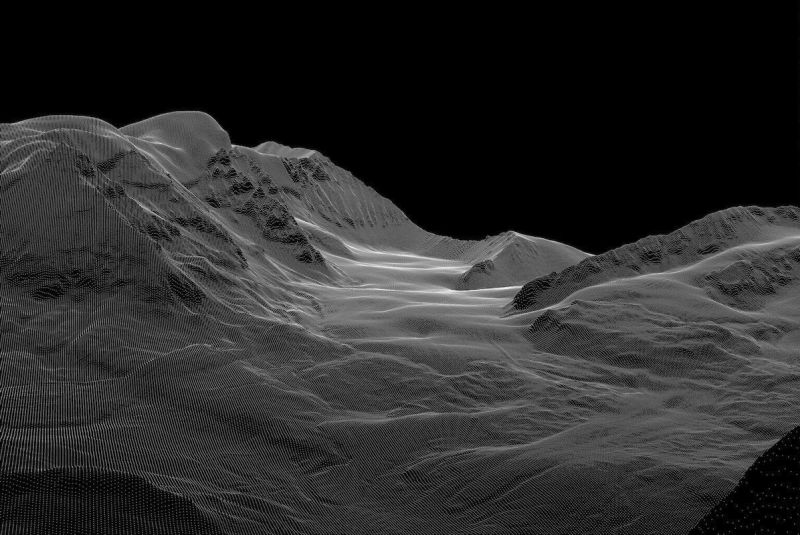
More information: https://meteoexploration.com/snow/